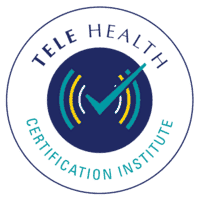Cognitive enhancement therapy (CET) is an evidence-based practice that uses brain games to target specific cognitive domains, such as attention, memory, and executive functioning. This intervention is particularly valuable for clients who have early course schizophrenia, schizophrenia-spectrum disorders, or neurocognitive conditions. CET’s effectiveness may be most evident when helping clients with social cognition—being able to get the gist of what someone says, understanding emotional cues, or employing flexible thinking, among other skills.
In a phone interview with the Telehealth Certification Institute, Christa Crohurst—a Licensed Professional Counselor in Arizona—describes her experience of using CET with clients. Christa explains why CET is an option for telehealth and what practitioners should watch out for before they begin offering sessions. Although Christa says that many of her clients have made huge strides with CET, there are a few challenges that practitioners can expect to encounter.
One of these hurdles is remaining a supportive presence while “allowing clients to come up with answers on their own.” The coach should focus on helping the client uncover new or rediscovered abilities. Since CET coaches usually use an online website that hosts digital games, clients who are tech-averse may feel frustrated. These clients could require additional assistance to properly log into their accounts or share their screens with their coach.
Christa explained that using CET sometimes takes a high degree of “creativity” if clients require offline options. In her experience, word searches and puzzles have been strong contenders for replicating online CET exercises. The artistry lies in how effectively coaches can connect CET skills to the real-world problems that clients are facing. A few other considerations when conducting online CET via telehealth are securing confidentiality in the virtual environment, minimizing distractions during sessions, and creating a space that’s conducive to therapy.
Once the logistics are worked out and clients have developed a comfort for the process, remarkable progress can be made with CET. One of the upsides of using online computer software is that it tracks client progress. This way, therapists or clinical teams can see pass/fail percentages and other statistics over time—a feature that encourages thorough documentation and treatment planning practices. Some of the areas where Christa has seen the biggest gains have been improvements in “focus, problem-solving, and [a client’s] access to skills.”
A full treatment course typically runs over 48 weekly sessions of closed group meetings with 8-12 individual clients. In groups, clients have interactive discussions, compare the results of their homework exercises, and complete cognitive tasks in pairs. Weekly individual coaching with a trained practitioner is seen as an ideal counterpart to group work. A recent report showed that 85-90% of clients attended CET groups, and 85% of them graduated. With CET, clients have a structured, engaging medium where they can test out solutions and skills before using them in real-life situations.
Sources:
Center for Cognition and Recovery. (n.d.). What is cognitive enhancement therapy?
SAMHSA’s National Registry of Evidence-based Programs and Practices. (n.d.). Cognitive enhancement therapy.




The course was so informative and I was glued to my screen for the entire duration. I received so much knowledge concerning ethics in telehealth and I am greatly encouraged to read about all the standards and policies that pertain to my practice. Thank you!.